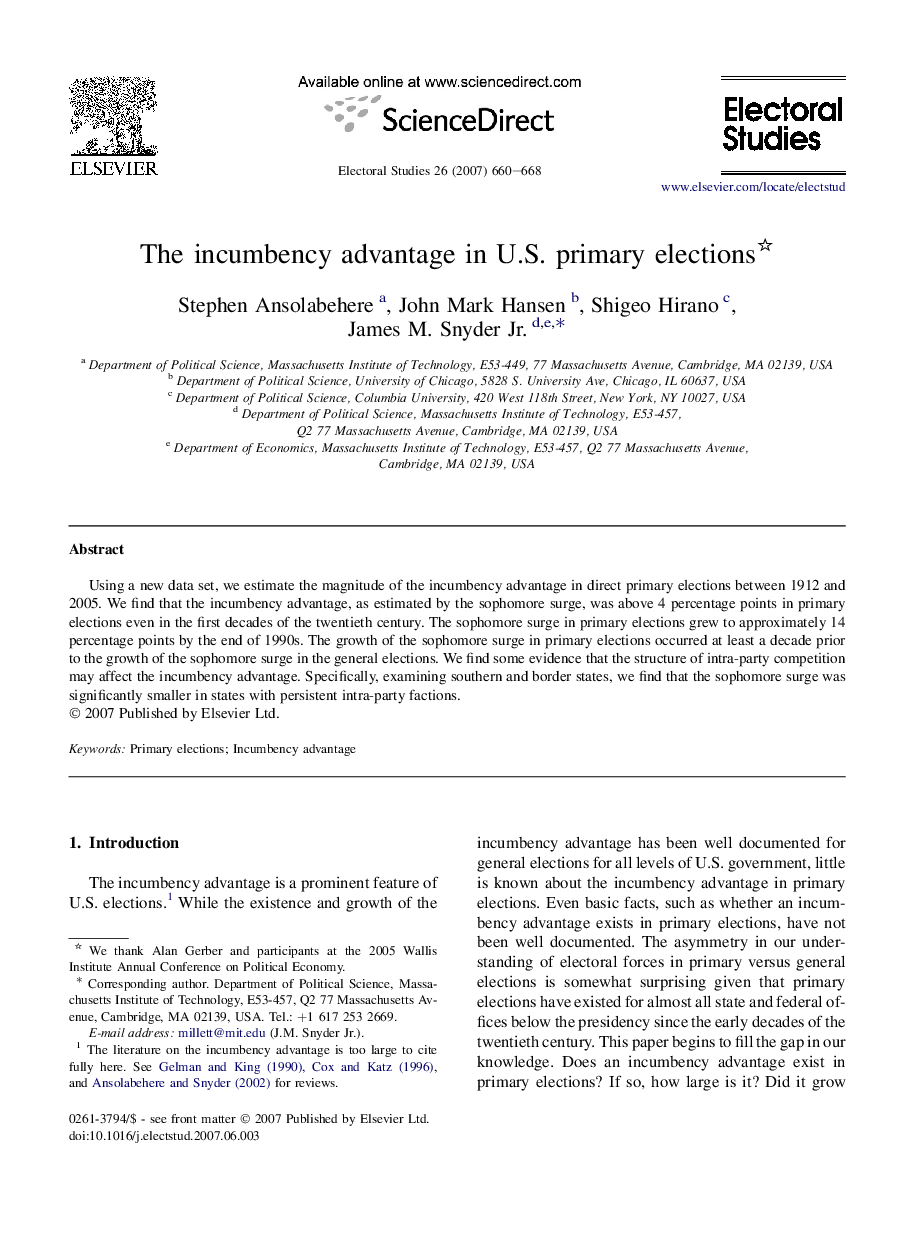| Article ID | Journal | Published Year | Pages | File Type |
|---|---|---|---|---|
| 1052550 | Electoral Studies | 2007 | 9 Pages |
Using a new data set, we estimate the magnitude of the incumbency advantage in direct primary elections between 1912 and 2005. We find that the incumbency advantage, as estimated by the sophomore surge, was above 4 percentage points in primary elections even in the first decades of the twentieth century. The sophomore surge in primary elections grew to approximately 14 percentage points by the end of 1990s. The growth of the sophomore surge in primary elections occurred at least a decade prior to the growth of the sophomore surge in the general elections. We find some evidence that the structure of intra-party competition may affect the incumbency advantage. Specifically, examining southern and border states, we find that the sophomore surge was significantly smaller in states with persistent intra-party factions.
